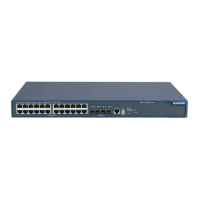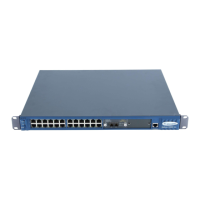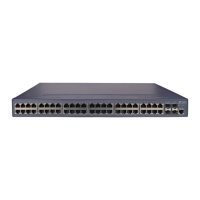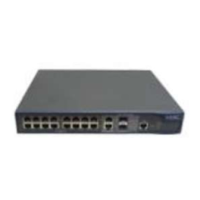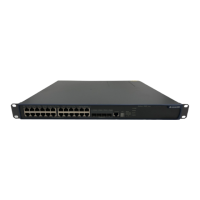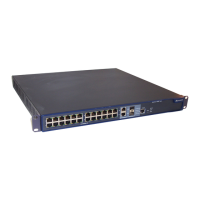Command Manual – SNMP and RMON
Quidway S3900 Series Ethernet Switches-Release 1510 Chapter 1 SNMP Configuration Commands
Huawei Technologies Proprietary
1-18
undo snmp-agent trap enable [configuration | flash | ospf [ process-id ]
[ ospf-trap-list ] | standard [ authentication | coldstart | linkdown | linkup |
warmstart ]* | system | vrrp [ authfailure | newmaster ] ]
View
System view
Parameter
Configuration: Configures to send configuration Trap packets.
flash: Configures to send flash Trap packets.
ospf [ process-id ] [ ospf-trap-list ]: Configures to send OSPF Trap packets. process-id
indicates a process ID. ospf-trap-list indicates a list of Trap packets to be sent.
standard: Configures to send SNMP standard notification or Trap messages.
Authentication: Sends SNMP authentication failure Trap messages in cases of
authentication failures.
coldstart: Configures to send SNMP cold start Trap messages when the device is
rebooted.
linkdown: Configures to send SNMP linkDown Trap messages when the port is down.
linkup: Configures to send SNMP linkUp Trap messages when the port is up.
warmstart: Configures to send SNMP warm start Trap messages when SNMP is
rebooted.
system: Configures to send H3C-SYS-MAN-MIB (private MIB) Trap packets.
vrrp [ authfailure | newmaster ]: Configures to send VRRP Trap packets.
Description
Use the snmp-agent trap enable command to enable the device to send Trap
packets.
Use the undo snmp-agent trap enable command to disable the device to send Trap
packets.
By default, the device is enabled to send Trap messages.
The snmp-agent trap enable and snmp-agent target-host commands must be used
at the same time. The snmp-agent target-host command specifies which hosts can
receive Trap message. However, to send Trap message, you must configure
snmp-agent target-host command.
Example
# Enable to send the Trap packet of SNMP authentication failure to 10.1.1.1. The
community name is public.
<Quidway> system-view

